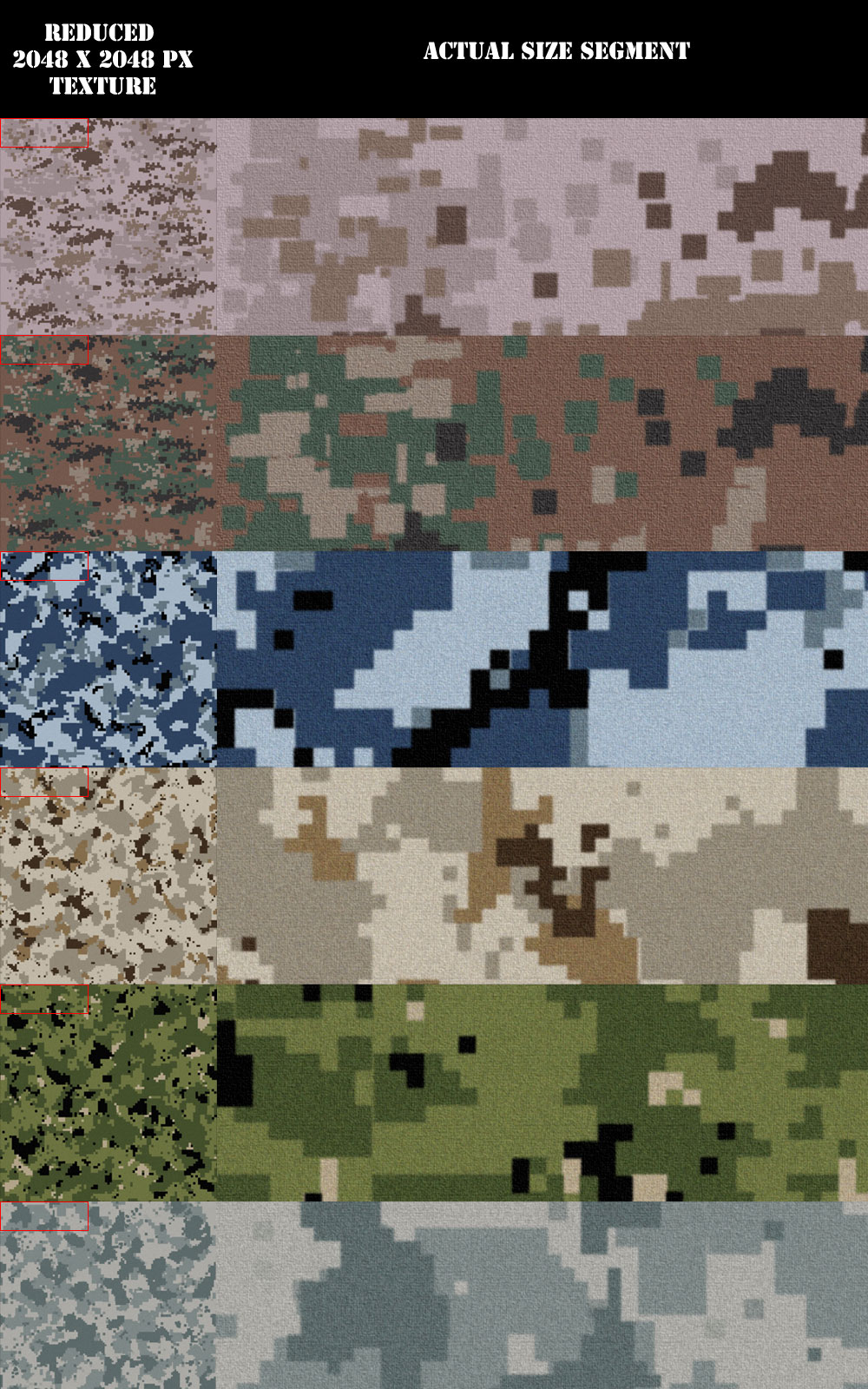What is digital camouflage?
A new company, Special Operation Apps, has been launched with the purpose of producing a series of applications designed for military mobile devices, touch screens, laptops and smart phones. First in line for launch is Camoscience, an application which could lead to a paradigm shift in mission-specific camouflage. The technology works by using terrain photos taken in the field (whether by plane, satellite or mobile device) and rendering them into a custom digital camouflage design which can be instantly sent electronically anywhere in the world. The benefit of such a technology could be particularly strong for Special Forces operations. For example, geospatial intelligence of Osama Bin Laden’s compound was used to recreate a mock 'killing house' for the American Special Forces to practise the operation. If Camoscience had been deployed to create specific uniforms for this mission, the uniforms would have been ready for action before the mock compound had even been constructed. Micro-environment specific camouflage could also be applied to weaponry and vehicles.
With modern digital printing methods, uniforms can be delivered at low cost with mission specific designs. Perhaps most importantly for urgent Special Forces operations, there is minimal time lag between design completion and production execution. Utilising digital inkjet printing technology, production can be initiated the same day, whereas with traditional rotary screen technology the setup time could be several weeks or even months. This technology is timed to make a crucial impact, as the US Army have recently issued a 'Camouflage Improvement Effort Solicitation' inviting designers to submit their own camouflage patterns intended for production and use in the field.
Universal or environment-specific camouflage
Military Wraps Research and Development president K. Dominic Cincotti, mastermind behind Camoscience, states: "The best camo is the most specific camo - we no longer need to stockpile millions of uniforms with a generalized, ineffective camo pattern because we are unsure of where the next threat will emerge." While this statement may have legitimacy, the issue is not black and white. Certain operating environments have several areas of contrasting terrain, making a multi-camouflage pattern a necessity. Afghanistan is a prominent example, where some units move between the desolate desert and lush heavily vegetated 'green zone'. Of course, a universal camouflage can never truly exist; certain attempts to create such a design have been met with polarised reception (for example the Army Combat Uniform or ACU – the U.S. Army’s current uniform for Afghanistan). To assess the effectiveness of digital technology in this area, some understanding of the science of camouflage is required.
The science of camouflage
Defence consultant and digital camouflage designer, Lt. Col. Timothy R. O’Neill has demonstrated with studies that correctly applied digital patterns cause a "detectability reduction in the range of 50% compared to 3-colour NATO and unpatterned targets." These results were obtained from a test at West Point military academy where a group of first year cadets were asked to detect a camouflaged target over a series of slides. Targets were dressed in either 3-colour NATO, monochrome or digital MARPAT camouflage and detection times were recorded.
The most innovative patterns are derived from complex fractals (a pattern that reveals new levels of complexity as it is enlarged) and algorithms to produce an effect which will blend into the surrounding foliage and bypass the brain’s natural tendency to categorise perceived information into objects (or specifically targets). Many fractals are found in nature (a fern is a good example) and serve as the basis for new camouflage designs. Uniforms with complex patterns utilising a wide range of colours and gradients reportedly blend into the environment more naturally and make the wearer's silhouette much more difficult to discern. This advantage is said to be particularly strong in situations with marginal light, where fractal shapes are especially difficult to focus on, sending conflicting messages to the brain and creating eye strain. Digital inkjet printing technology is especially good at reproducing patterns with fine details, multiple colours and colour gradients economically, especially for the short runs characteristic of military clothing. Traditionally camouflage is printed on a rotary screen production line using four colours or less, and adding even a single colour can be disproportionately expensive. The human eye is also good at recognising pattern repetition, and digital production allows for a much longer repeat length than is possible with rotary screen.
Summary
While debates rage over the effectiveness of particular camouflage techniques, the market continues to expand beyond just the military. Paintballing and hunting enthusiasts are also on the lookout for the latest camouflage designs in order to give them the edge over their competitors/prey. Advantages of digital include: no repeat length, designs printed directly from sophisticated creation algorithms, low setup time and variable/low repeat images. Time will tell whether the mission-specific digitally rendered uniforms offered by Camoscience will truly be preferable to the wide range of uniforms already possessed by the world’s Special Forces units. In either instance, the application of camouflage printing remains an exciting new prospect for digital inkjet printing technology.
Tim Phillips, Catenary Solutions
Further Reading

